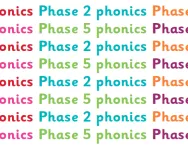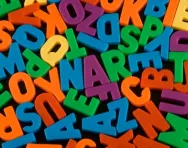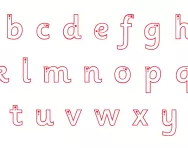Important update from TheSchoolRun
For the past 13 years, TheSchoolRun has been run by a small team of mums working from home, dedicated to providing quality educational resources to primary school parents. Unfortunately, rising supplier costs and falling revenue have made it impossible for us to continue operating, and we’ve had to make the difficult decision to close. The good news: We’ve arranged for another educational provider to take over many of our resources. These will be hosted on a new portal, where the content will be updated and expanded to support your child’s learning.
What this means for subscribers:
- Your subscription is still active, and for now, you can keep using the website as normal — just log in with your usual details to access all our articles and resources*.
- In a few months, all resources will move to the new portal. You’ll continue to have access there until your subscription ends. We’ll send you full details nearer the time.
- As a thank you for your support, we’ll also be sending you 16 primary school eBooks (worth £108.84) to download and keep.
A few changes to be aware of:
- The Learning Journey weekly email has ended, but your child’s plan will still be updated on your dashboard each Monday. Just log in to see the recommended worksheets.
- The 11+ weekly emails have now ended. We sent you all the remaining emails in the series at the end of March — please check your inbox (and spam folder) if you haven’t seen them. You can also follow the full programme here: 11+ Learning Journey.
If you have any questions, please contact us at [email protected]. Thank you for being part of our journey it’s been a privilege to support your family’s learning.
*If you need to reset your password, it will still work as usual. Please check your spam folder if the reset email doesn’t appear in your inbox.
Parents' guide to Phase 3 phonics

What is Phase 3 phonics?
Phase 3 phonics builds upon Phase 1 and 2 by introducing less commonly used sounds (or phonemes). Depending on which scheme your school follows, there are typically 25 of these sounds, often made up of two letters.
How are children taught Phase 3 phonics?
Children will be taught more tricky words such as ‘was’ or ‘they’. They will learn the names of the letters and the sounds that the letters make. Teachers may use mnemonics (memory aids), mini whiteboards, word cards and singing alphabet songs to help teach the children these tricky words.
How long does Phase 3 phonics take to teach?
It typically takes around 12 weeks for children to be taught Phase 3 phonics, and by the end of this period, they should be able to recognise and say the sounds of most of the Phase 2 and Phase 3 symbols (graphemes), blend CVC words, and read 12 tricky words and copy letters correctly.
What sounds are taught for Phase 3 phonics?
In addition to learning the sounds below, children in Phase 3 phonics continue to practise blending sounds to read simple words and segmenting words into individual sounds for spelling. Tricky words (sight words that cannot be easily sounded out) are also introduced during this phase. The emphasis is on building fluency in blending and segmenting, which are crucial skills for reading and spelling.
| Sound | Example |
|---|---|
| ai | train |
| oo | moon |
| air | hair |
| ar | car |
| ch | chair |
| ear | beard |
| ee | sheep |
| er | rubber |
| igh | night |
| j | jelly |
| ng | ring |
| oa | goat |
| oi | coin |
| oo | book |
| or | horn |
| ow | cow |
| qu | queen |
| sh | shower |
| th | thumb |
| ure | cure |
| x | x-ray |
| y | yellow |
| w | witch |
| z | zebra |
| zz | buzz |
How can you help support Phase 3 phonics learning at home?
Supporting Phase 3 phonics at home is a great way for parents to reinforce what children are learning in school and help them develop strong foundational skills in reading and spelling. Here are some suggestions:
- Read books together, emphasising words that contain Phase 3 sounds. Choose books that include words with consonant digraphs (e.g., ship, chip) and vowel digraphs (e.g., rain, feet).
- Use phonics games and activities that focus on Phase 3 sounds. There are many online resources, apps, and printable games designed to make learning phonics fun.
- Create flashcards with Phase 3 phonemes and tricky words. Practise blending sounds to read words and segmenting words into individual sounds for spelling.
- Use magnetic letters to create words with Phase 3 sounds. Encourage your child to sound out the words and blend the sounds together.
- There are several phonics apps designed for children that cover Phase 3 phonics. These apps often include interactive games and activities to engage and reinforce learning.
- Practise writing words that include Phase 3 sounds. Encourage your child to write short sentences and stories, incorporating the new phonemes.
- Play rhyming games to reinforce the ability to hear and generate rhyming words. For example, you could say a word like cat, and your child can come up with rhyming words like bat, hat, or mat.
- Introduce and practise reading tricky words. These are words that cannot be easily sounded out and need to be recognised by sight.
- Make flashcards or play games with tricky words.
- Label common items around the house with words containing Phase 3 sounds. This helps reinforce the association between sounds and written words in a real-world context.
- Celebrate your child's achievements and progress. Positive reinforcement helps build confidence and a positive attitude towards learning.






